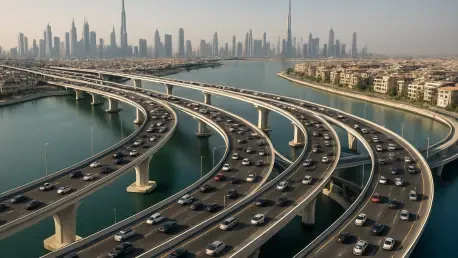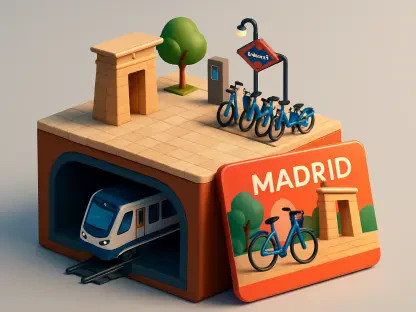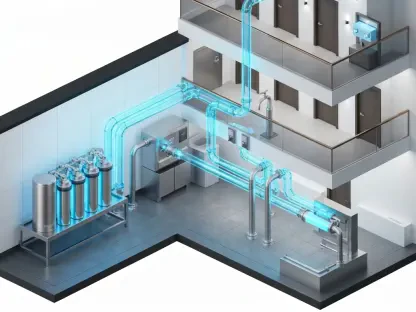Dubai’s bustling urban landscape is no stranger to traffic challenges, especially around iconic destinations like the Mall of the Emirates, which draws millions of visitors each year. In a remarkable stride toward easing congestion and enhancing accessibility, the Roads and Transport Authority (RTA), in collaboration with Majid Al Futtaim Properties, has unveiled a transformative infrastructure project. A newly constructed 300-meter single-lane bridge on Sheikh Zayed Road now offers direct access to the mall’s parking lots for drivers coming from Abu Dhabi and Jebel Ali. This development, part of a broader initiative to streamline traffic flow, promises to redefine the commuting experience for countless motorists. With a capacity to handle 900 vehicles per hour, the bridge cuts travel time dramatically, turning a frustrating 10-minute journey into a swift one-minute trip. This bold move underscores Dubai’s commitment to innovative urban planning and sets the stage for a deeper look into the project’s impact and future implications.
Transforming Traffic Flow for Shoppers and Commuters
The introduction of the new bridge on Sheikh Zayed Road marks a significant leap forward in addressing long-standing traffic bottlenecks around one of Dubai’s premier shopping hubs. For years, drivers approaching the Mall of the Emirates from Abu Dhabi or Jebel Ali have faced delays, especially during peak hours, as they navigated complex routes to reach the parking areas. Now, with this dedicated single-lane structure, the journey has been streamlined to a mere minute, a reduction that not only saves time but also reduces stress for commuters. The RTA’s strategic focus on this corridor reflects a deep understanding of the area’s high traffic volume, driven by the mall’s status as a major attraction with over 40 million annual visitors. Beyond just convenience, this infrastructure upgrade enhances road safety by minimizing congestion points, ensuring smoother transitions for vehicles entering and exiting the vicinity. The immediate benefits are clear, as motorists experience a newfound ease in accessing this key destination without the usual delays.
Equally impressive are the broader enhancements accompanying the bridge’s opening, which demonstrate a comprehensive approach to urban mobility. The RTA has gone beyond merely constructing a new access point by implementing extensive upgrades to the surrounding road network. This includes widening the southbound ramp at Umm Suqeim junction and improving the junction itself to facilitate better access from Umm Suqeim Street. Additionally, 2.5 kilometers of roads around the mall have been revamped, alongside the development of six signalized intersections to optimize traffic flow. Modifications to the bus station at the Mall of the Emirates Metro Station, along with enhanced pedestrian and cycling facilities, further complement these efforts. The conversion of the road near Kempinski Hotel into a two-way street also aids in better circulation. Together, these changes create a more integrated and efficient transportation ecosystem, catering to diverse modes of travel and ensuring that the benefits extend beyond just drivers to all users of the area’s infrastructure.
A Collaborative Vision for Urban Connectivity
The partnership between the RTA and Majid Al Futtaim Properties exemplifies how public and private entities can align their goals to address urban challenges effectively. This collaboration has been pivotal in tailoring infrastructure solutions to the specific needs of a commercial giant like the Mall of the Emirates, which serves as both a retail powerhouse and a cultural landmark. The joint effort ensures that the new bridge and associated upgrades are not standalone projects but part of a cohesive strategy to support economic and social activity in Dubai. Mattar Al Tayer, Director General and Chairman of the Board of Executive Directors of the RTA, has emphasized the dramatic time savings as a testament to the project’s success. Such initiatives highlight a growing trend where infrastructure development is closely tied to the demands of major hubs, ensuring seamless connectivity for millions. This synergy sets a precedent for future projects, demonstrating the value of a shared vision in tackling the complexities of urban growth.
Beyond the immediate impact, this project aligns with Dubai’s long-term urban planning objectives, showcasing a proactive stance on managing rapid expansion. The Mall of the Emirates itself is undergoing a Dh5 billion redevelopment to mark its 20th anniversary, expanding retail space by 20,000 square meters and adding up to 100 new outlets, alongside amenities like a health club and cultural center. With direct Dubai Metro connectivity and proximity to three five-star hotels, the mall’s significance as a destination continues to grow, necessitating robust traffic solutions. The RTA’s upgrades, including the new bridge, directly support this evolution by ensuring accessibility keeps pace with development. Moreover, plans for the Umm Suqeim Street Improvement Project, spanning 6 kilometers with six upgraded junctions, four bridges, and two tunnels, signal further commitment to enhancing capacity and reducing congestion. These forward-looking efforts underscore a dedication to sustaining Dubai’s appeal as a global hub through strategic infrastructure investments.
Building Momentum for Future Growth
Reflecting on the completion of the bridge and surrounding upgrades, it’s evident that the RTA delivered a game-changing solution for traffic around the Mall of the Emirates. The dramatic reduction in travel time, coupled with comprehensive road network enhancements, alleviated immediate congestion issues while setting a high standard for urban infrastructure projects. These initiatives improved safety, efficiency, and accessibility for millions of visitors and residents who navigate the area daily. The collaborative spirit between public authorities and private developers also proved instrumental in achieving such impactful results, ensuring that the needs of a major commercial destination were met with precision.
Looking ahead, the focus shifts to sustaining this momentum through continued investment in projects like the Umm Suqeim Street improvements. Stakeholders must prioritize integrating emerging technologies and sustainable practices into future developments to further enhance urban mobility. Exploring innovative traffic management systems and expanding pedestrian-friendly designs could amplify the benefits of these initiatives. As Dubai continues to grow, maintaining a balance between immediate solutions and long-term planning will be key to supporting its dynamic urban landscape and preserving its status as a world-class city.









